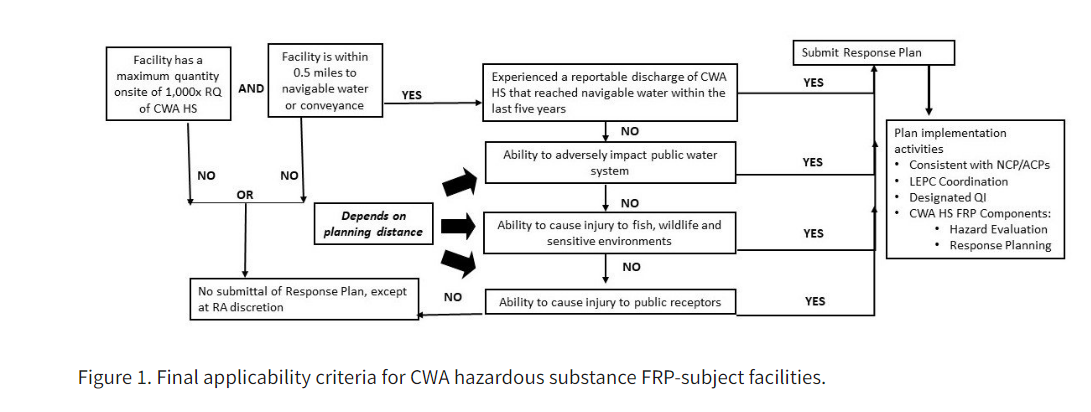USEPA Issues New Rule Expanding Scope of Regulations Requiring Facility Response Plans for Worst-Case Scenario Discharge of Hazardous Substances under the CWA
On March 28, 2024, the United States Environmental Protection Agency (USEPA) published a final rule (the 2024 Rule) that expands the number of facilities required to develop a facility response plan for a worst-case discharge of certain hazardous substances or the threat of such a discharge.[1] Prior to this 2024 Rule, the Clean Water Act (CWA) regulations required an owner or operator of a facility to prepare and submit to USEPA a facility response plan for responding to a worst-case discharge of oil. This 2024 Rule, however, expands the scope of the regulation to also require facilities to prepare and submit a facility response plan for the discharge (or threat of discharge) of CWA-listed hazardous substances.
This 2024 Rule will expand the number of facilities that need to submit a facility response plan, so facilities will need to determine if the expansion affects them or not. USEPA provided screening guidance on how to determine whether or not a facility might be impacted.
The first step in the screening process is to assess whether the facility
1) has a maximum quantity onsite of 1,000 times the Reportable Quantity of CWA Hazardous Substances[2], and
2) is within 0.5 miles of navigable water or conveyance to navigable water.
Based on the responses to the initial screening criteria, USEPA has created a flowchart to identify whether a Facility Response Plan is required.[3]

As seen in the figure above, this flowchart, and the underlying 2024 Rule, incorporates the risk that a discharge poses to public waters, fish and wildlife, and public receptors, known as the substantial harm criteria. Based on this analysis, a facility might need to submit a facility response plan to address the risk associated with the storage of the hazardous substance(s).
In response to the release of this 2024 Rule, facilities should first assess whether it meets the two initial screening criteria. In the event the two screening criteria are met—the facility has a maximum quantity of a CWA-listed hazardous substance that exceeds 1,000 times the reportable quantity AND the facility is within a half-mile of a navigable water or conveyance—then the facility will need to comply with the rule. This could involve submission of a Substantial Harm Certification Form to USEPA, development of a facility response plan, or some combination.
If your facility meets the two initial screening criteria, or if you are unsure whether your facility must comply with the 2024 Rule, then please contact Nat Morse, Kristin Watt, or your Vorys attorney.
____________
[1] Clean Water Act Hazardous Substance Facility Response Plans, 89 FR 21924, https://www.federalregister.gov/documents/2024/03/28/2024-05870/clean-water-act-hazardous-substancefacility-response-plans (with an effective date for the rule of May 28, 2024).
[2] See https://www.epa.gov/epcra/clean-water-act-cwa-and-cercla-hazardous-substance-lists (“CWA Hazardous Substances are designated under CWA section 311(b)(2)(A). CWA Hazardous Substances are listed in 40 CFR 116.4 in Table 116.4 A “List of Hazardous Substances” and Table 116.4 B “List of Hazardous Substances by CAS Number”. Additionally, Table 117.3 in 40 CFR 117.3 provides the CWA Reportable Quantities (RQs) for these CWA hazardous substances.”).
[3] See Clean Water Act Hazardous Substance Facility Response Plan Applicability, U.S. Env’t Prot. Agency, https://www.epa.gov/hazardous-substance-spills-planning-regulations/clean-water-act-hazardous-substance-facility.


